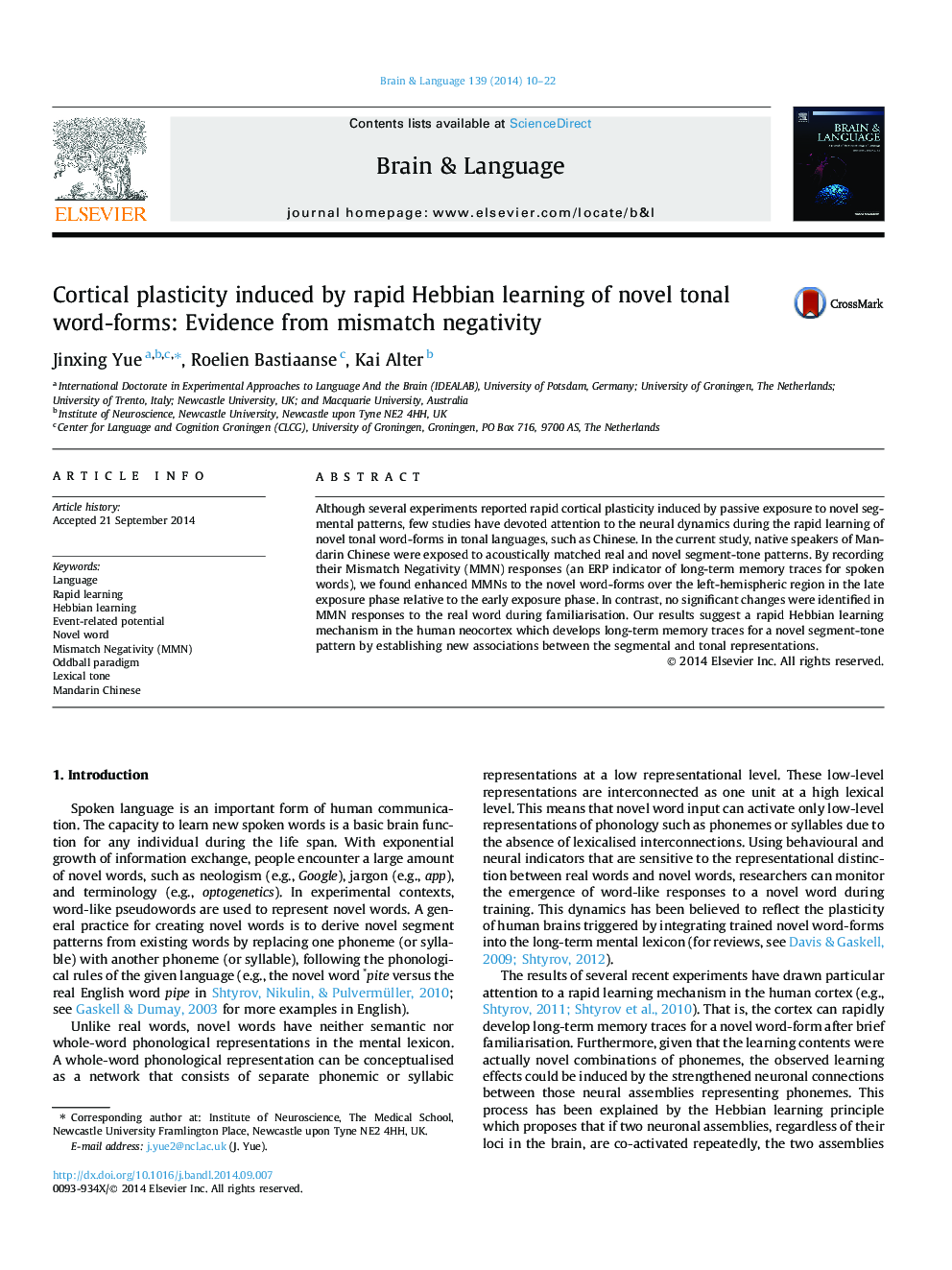| Article ID | Journal | Published Year | Pages | File Type |
|---|---|---|---|---|
| 7284523 | Brain and Language | 2014 | 13 Pages |
Abstract
Although several experiments reported rapid cortical plasticity induced by passive exposure to novel segmental patterns, few studies have devoted attention to the neural dynamics during the rapid learning of novel tonal word-forms in tonal languages, such as Chinese. In the current study, native speakers of Mandarin Chinese were exposed to acoustically matched real and novel segment-tone patterns. By recording their Mismatch Negativity (MMN) responses (an ERP indicator of long-term memory traces for spoken words), we found enhanced MMNs to the novel word-forms over the left-hemispheric region in the late exposure phase relative to the early exposure phase. In contrast, no significant changes were identified in MMN responses to the real word during familiarisation. Our results suggest a rapid Hebbian learning mechanism in the human neocortex which develops long-term memory traces for a novel segment-tone pattern by establishing new associations between the segmental and tonal representations.
Keywords
Related Topics
Life Sciences
Neuroscience
Biological Psychiatry
Authors
Jinxing Yue, Roelien Bastiaanse, Kai Alter,
